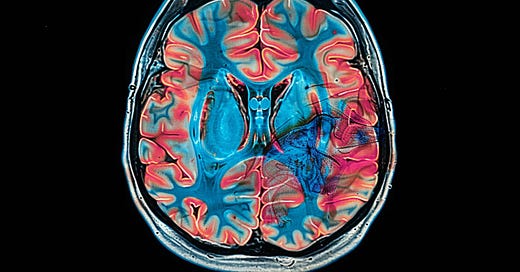Shaping minds with non-invasive solutions
The role of non-invasive brain stimulation (NIBS) devices for therapeutic and non-therapeutic applications
Based on advances in biotechnology and neuroscience, non-invasive neuromodulation or brain stimulation (NIBS) devices for both therapeutic and non-therapeutic applications are widely seen to gain importance and to be of increasing interest to patients, clinicians, health systems, payers, and industry in the coming years.1
This particularly holds for indications where treatments are currently insufficient, such as drug-resistant depression and neurodegenerative diseases like ALS and Parkinson’s Disease. The percentage of U.S. adults who report having been diagnosed with depression at some point in their lifetime has reached 29% in 2023, nearly 10 percentage points higher than in 2015.2 The number of people with Parkinson’s disease more than doubled from 1990 to 2015 and could double again by 2040.3
Figure 1. Number of people with Parkinson’s disease globally (millions) based on Dorsey et al. (2020).
Non-invasive neuromodulation is also being used and trialed for acute and preventative treatment of migraines and tension-type headache (TTH). There it could prove particularly valuable for people who face an elevated risk of medication overuse headache and people preferring non-drug treatment. Tension-type headaches (TTH) are common: They affect approximately 1.4 billion people or 20.8% of the population.4
On Not In Your Body
Generally, neuromodulation devices are advanced medical tools that can enhance or suppress the activity of the nervous system.5 Opposed to brain-computer interface (BCI) implant neuromodulation projects like Elon Musk’s Neuralink, non-invasive neuromodulation devices use electrical or magnetic stimulation to modulate the nervous system without penetrating the skin or body tissues.
The use of electricity for brain healing has been long documented; first, in stone carvings from the Fifth Dynasty of Egypt in which an electric fish was used to treat pain; and later, during the time of Socrates, when electric fish were used to treat headaches and arthritis.6 Non-invasive brain stimulation (NIBS) has been a common term for approximately 30 years since the first definition of transcranial magnetic stimulation (TMS) by Anthony Barker at Sheffield University, UK, in 1985.7
Today, the two major modalities of NIBS are transcranial magnetic stimulation (tMS) and transcranial direct current stimulation (tDCS), a technique that is part of the group of transcranial electrical stimulation (tES). tMS involves placing a coil on the scalp to induce an electromagnetic field that stimulates the brain, while tDCS applies low-level electric currents through electrode pads on the scalp.8
Unlike tMS, which can produce a direct neurostimulator effect, tDCS did not usually elicit action potentials. Instead, tDCS was thought to exhibit a modulatory effect on brain function: the externally applied electric field displaces ions within neurons, altering neuronal excitability and modulating the firing rate of individual neurons.9
Other forms of tES include transcranial alternative current stimulation (tACS), which applies alternating currents to modulate brain activity and transcranial random noise stimulation (tRNS), which applies random electrical noise to the brain.
An emerging NIBS technique is transcranial ultrasound stimulation (tUS) which uses focused ultrasound waves to modulate brain activity.10
A No-Brainer?
Several industry, startup, and research initiatives are working on next-generation non-invasive neuromodulation devices and the development of new stimulation protocols such as high-frequency tMS and intermittent theta burst stimulation, which have shown promising results in the treatment of mental health conditions.11
Deepsense is the expert network for science and technology.
Reach out to us to schedule expert calls and materials reviews to get support with technical assessments of your next opportunity.
However, challenges and ethical questions surrounding the development, regulation, practitioner training, and reimbursement of NIBS devices for the treatment of nervous system disorders as well as for non-therapeutic uses persist.
Especially for startups, navigating through regulatory and reimbursement environments to bring a device to market successfully and establishing resources to devote to the pursuit of endorsement by regulators and payers remains challenging.
Regulatory environments could be subject to significant change as exemplified by the European Union’s (EU) reclassification of non-invasive brain stimulation (NIBS) technologies as Class III medical devices in December 2022. This put repetitive transcranial magnetic stimulation (rTMS) and low-intensity transcranial electrical stimulation (tES) devices to be considered in the highest-risk category under the EU Medical Device Regulation.12
Further, the safe and effective administration of NIBS techniques heavily relies on basic competencies, advanced knowledge and skills of practitioners in NIBS.13 Both physician and patient education needs to be emphasized going forward.14
Non-invasive brain stimulation (NIBS) could be a key asset to address significant medical issues we are facing already today and likely to escalate even more in the future. While technological advancements could pave the way for further development and commercialization, the regulatory, practitioner, and reimbursement environment is likely to play an similarly important role. Further, with studies showing differences in treatment outcomes even for devices using similar modalities, questions about the comparability of devices and gold standard of care remain to be answered.15




